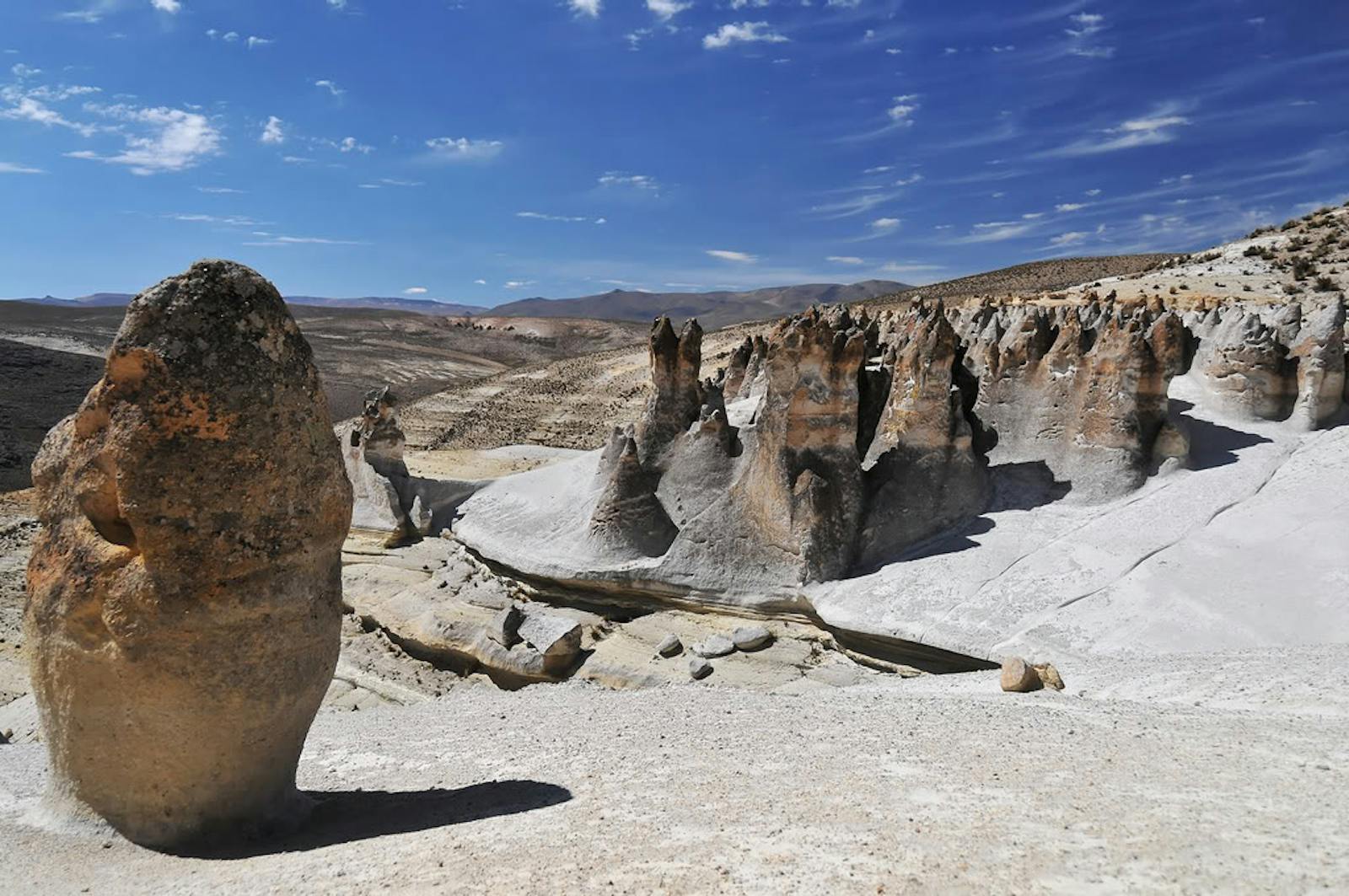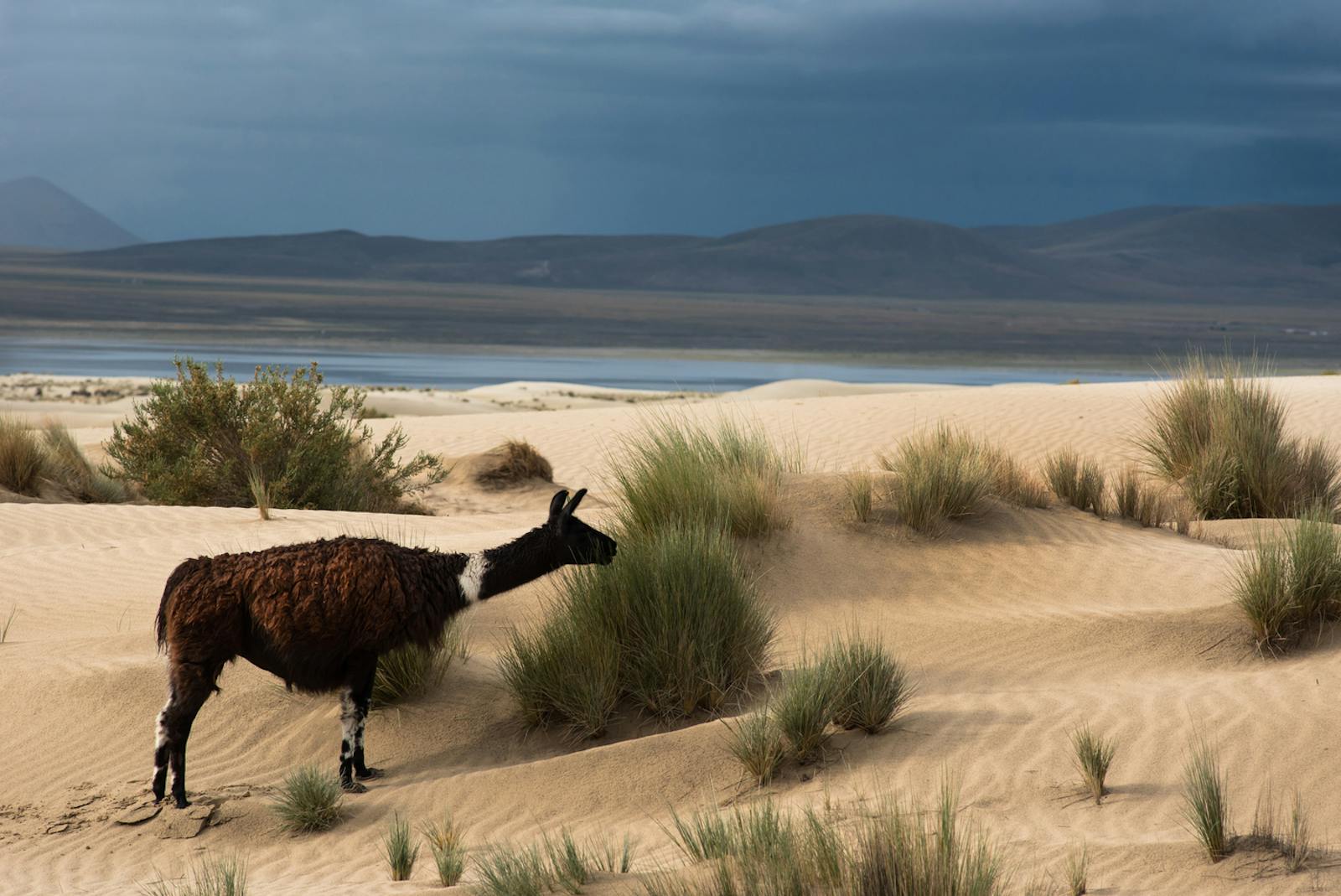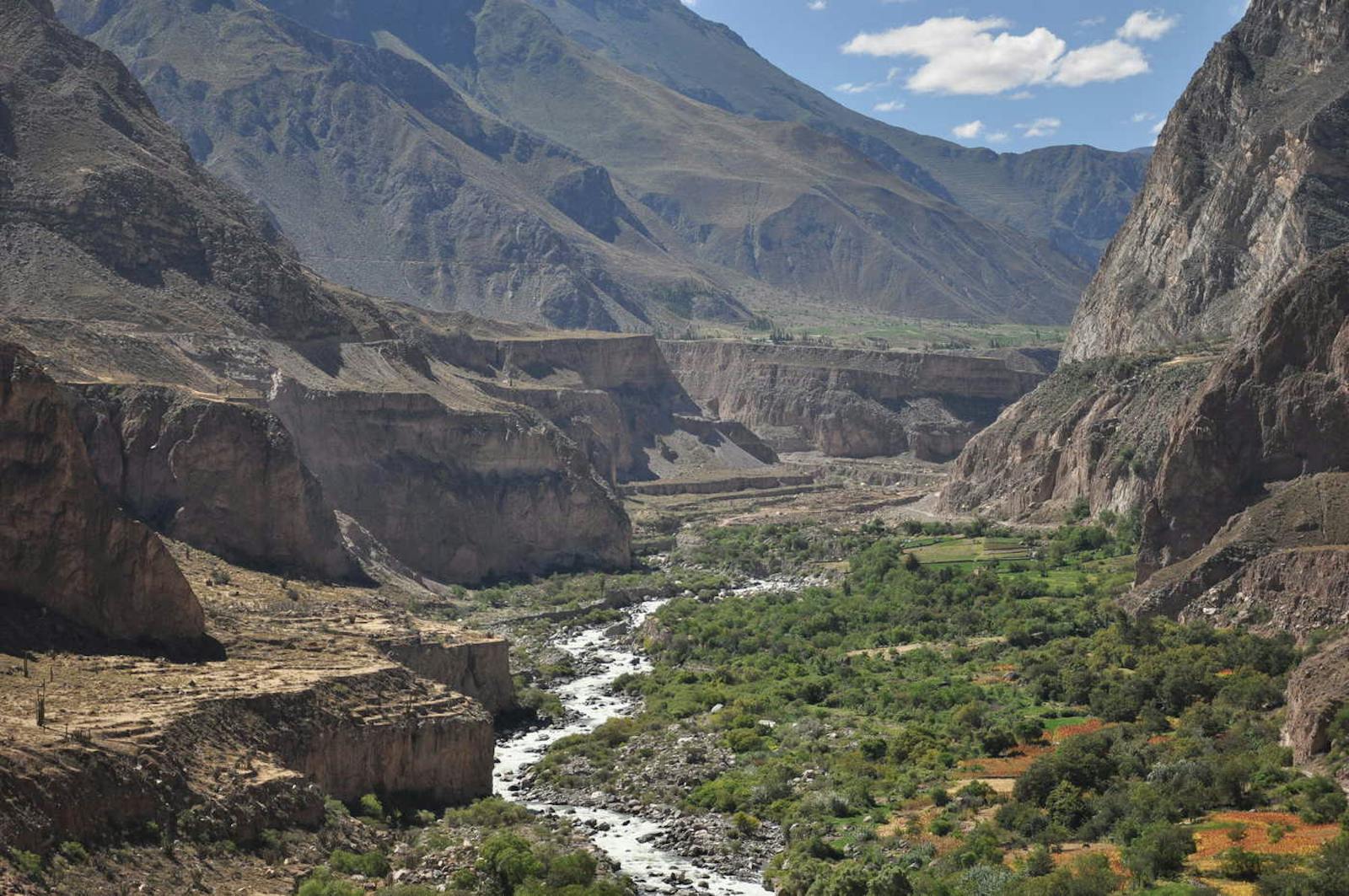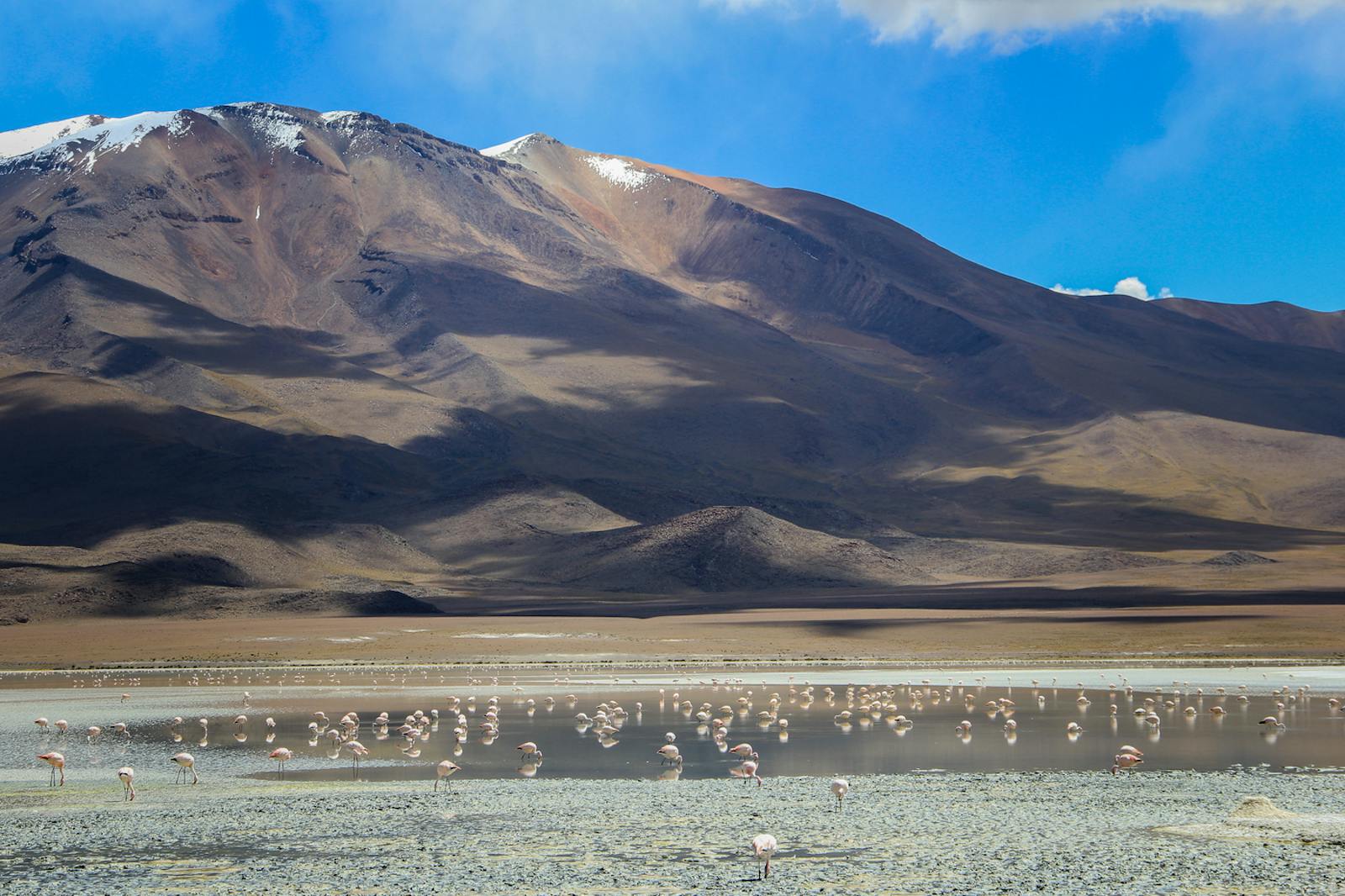Central Andean Puna
The ecoregion’s land area is provided in units of 1,000 hectares. The conservation target is the Global Safety Net (GSN1) area for the given ecoregion. The protection level indicates the percentage of the GSN goal that is currently protected on a scale of 0-10. N/A means data is not available at this time.
Bioregion: Andean Mountain Grasslands (NT5)
Realm: Southern America
Ecoregion Size (1000 ha):
21,254
Ecoregion ID:
588
Conservation Target:
41%
Protection Level:
7
States: Argentina, Peru, Bolivia, Chile
There is little known about the puna mouse, currently thought to be Vulnerable to extinction. Found only in a small portion of this ecoregion, it is known to occur primarily near rocks and perennial streams. Restricted to a very limited elevational range, it is thought to be impacted by climate change as the ecoregion (and Andes) begin to warm. As of now, populations of this endemic mouse are declining due to loss of puna habitat to agriculture, grazing, burning, and other human activities. Further research is needed to be able to better predict the future of the puna mouse and its home.
The Central Andean Puna ecoregion is a high elevation montane grassland in the southern high Andes, extending from southern Peru, though Bolivia, into northern Argentina. It maintains nearly unaltered blocks of habitat, representing an important area for the conservation of endemic species of both flora and fauna. The landscape is characteristically mountainous, with snow-capped peaks, mountain pastures, high lakes, plateaus, and valleys. It lies within the altitudinal range between 3200 and 6600 m.
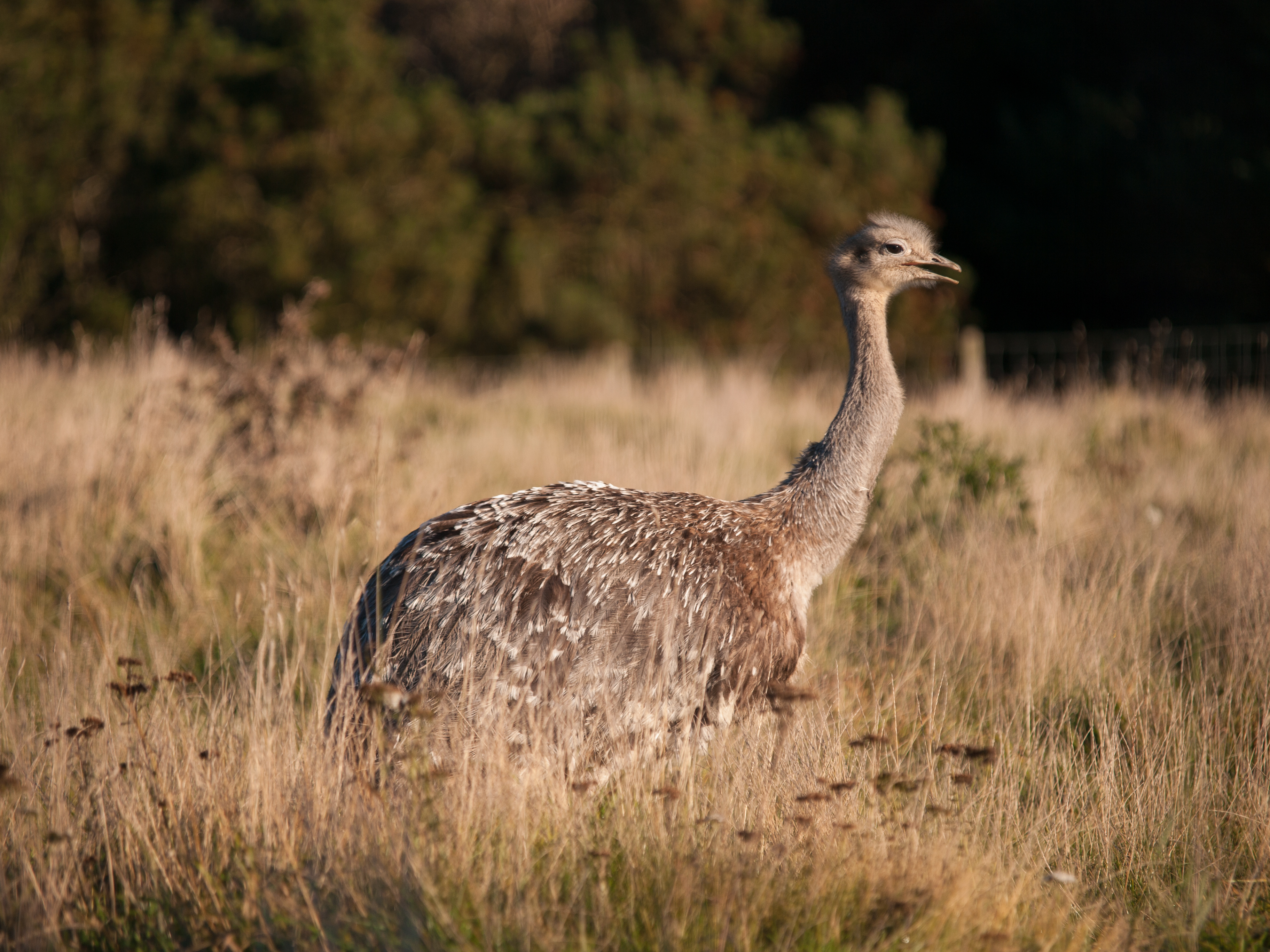
The flagship species of the Central Andean Puna ecoregion is the Darwin’s rhea. Image credit: Creative Commons
Its climate varies annually from <0 to 15ºC and rainfall varies between 250 and 500 mm/year. The vegetation is defined by being notably drier than in the rest of the puna. Open meadows are dotted with an assortment of rock, open ground, and sparse vegetation such as bunchgrass, herbs, and lichens. This ecoregion is continuous and transitional between the wet puna to the north and west, and the dry puna to the south.
It mainly consists of grasslands made up of different types of grasses primarily of the genera Calamagrostis, Agrostis and Festuca. There are also grasslands with wet formations like bofedales, peat bogs and some reed beds. Characteristic formations include the tolares, consisting primarily of small bushy species.
As in the wet puna, there are yaretales (Azorella yarita) and stands of Puya raimondi, a species that has the largest spike in the world. There are also some extensive relicts of montane shrublands of native species like the queñoa (Polylepis spp.) and colle (Buddleia sp.), while chachacomo (Escallonia sp.) trees can be found at lower altitudes.
The characteristic dryness, intensive radiation, and low atmospheric pressure causing low oxygen levels, along with the strong natural disturbances cycles (like droughts and frost) have made it challenging for life to develop in this ecoregion. Thus, the species that inhabit the ecoregion have interesting adaptations. Some leaves have insulating hairs, very slow growth, stunted forms and high resin content, which means they are flammable.
In the case of the mammalian fauna, herbivores have strong incisors that allow them to feed on the hardest plants and have special skins that allow them to tolerate low temperatures and strong winds.
Some of the plant species found only in this ecoregion are the Diplostephium tovari and Ribes brachybotrys; endemic mammals includes the Puna mouse and Darwin’s rhea. The diversity of mammals, particularly rodents, increases going from north to south, likely due to the various rivers that have acted as barriers to dispersal. There are a number of threatened bird species as well, including the royal cinclodes, tamarugo conebill, Jame’s flamingo, and giant coot.
Both current and historic grazing and burning have had widespread effects on the ecoregion. Also, the Central Andean Puna ecoregion faces increasing mining activity, leading to the destruction of its scarce vegetation cover, as well as the contamination of some bodies of water and the soil.
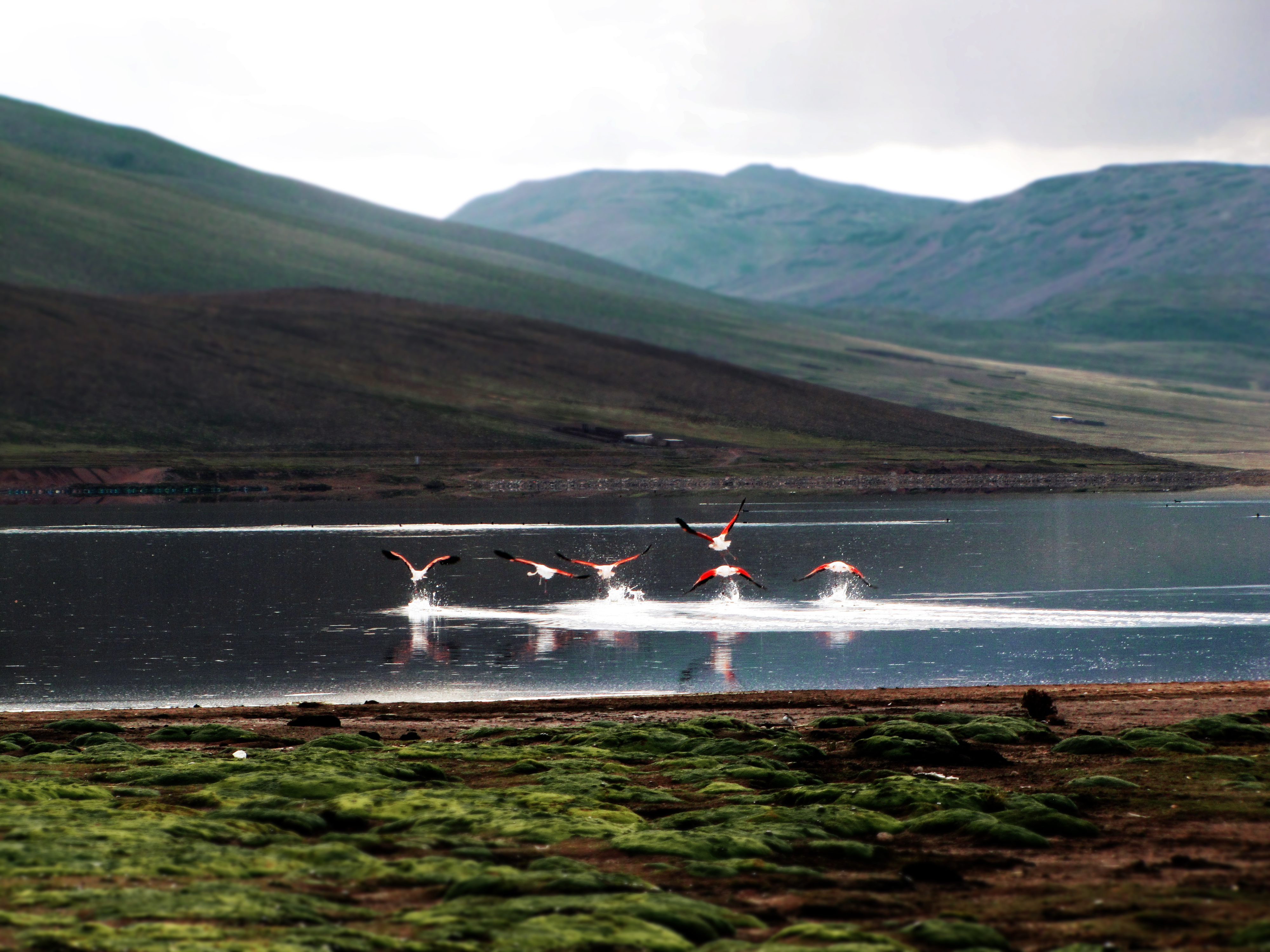
Flamingos. Image credit: Creative Commons
In addition, this region has many towns and highways that cross the Andes, leading to a decline in natural habitat and growing pressures on the existing fauna. Fortunately, a portion of these habitats is represented within some existing protected natural areas in which most plant formations are included, such as Tariquía Flora and Fauna National Reserve, Cordillera de Sama Biological Reserve, Aymara Lupaca Reserved Zone, Salinas and Aguada Blanca National Reservation, and Cotahuasi Subbasin Landscape Reserve. However, there are still information gaps on the ecology and biodiversity of this area, particularly of mammals, reptiles, and amphibians.
The priority conservation actions for the next decade are to: 1) mitigate environmental impacts of road construction, allowing for greater connectivity among populations; 2) protect current plant cover to reduce contamination of water and soil; 3) work with local communities to reduce burning impact on landscape.
Citations
1. Salcedo, J.C.R. 2018. South America: Argentina, Bolivia, and Peru. https://www.worldwildlife.org/ecoregions/nt1002 Accessed October 8, 2018.
2. Patterson, B. & Zeballos, H. 2018. Punomys lemminus. The IUCN Red List of Threatened Species 2018: e.T18880A22335449. http://dx.doi.org/10.2305/IUCN.UK.2018-1.RLTS.T18880A22335449.en. Downloaded on 16 October 2018.
